The Cost Of Golf In Retirement

From left: Bill Demarest, Tom Finan, Jim Houp, Felix Ledkinf at The Villages.
Like "big-headed driver" and "affordable green fee," the term "golf retirement" doesn't mean what it used to.
As baby boomers move into their post-career years, they're stretching the concept in all-new directions. For some, retirement represents a chance to combine multiple passions in active lifestyles their parents never would have imagined (golf half the year, skiing the rest of the year). Though many still find their bliss in classic retirement communities, others are heading out in new directions: to university towns, where youthfulness and cultural diversity exist alongside a full calendar of country-club activities; to geographically remote -- but economically advantageous -- corners of middle America; to the desert and the mountains of the Southwest, achieving the perfect year-round climate.
To get a sense of what life is like for today's retirees -- and what it costs them to include golf in their lifestyles -- we selected five markets throughout the United States and profiled a happily retired couple in each. We chose these markets with help from the research firm Longitudes Group, which identified regions with a high percentage of residents 65 and over, many avid golfers, and plentiful golf courses. (Perhaps because it's known as much for skiing as golf, Park City, Utah, has a relatively small percentage of 65-and-overs but does well on other counts.)
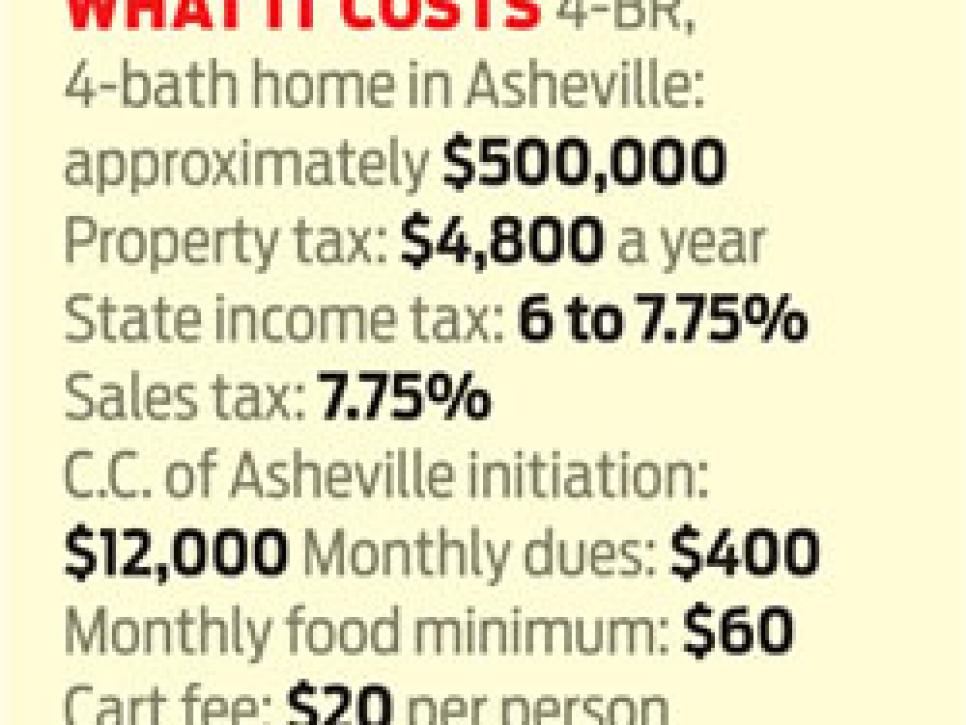
ASHEVILLE / N.C.
Ed Woeckener, 75, is a reminder that nothing is permanent, even in retirement. "I've retired three times," says the Asheville resident. "First in '89, then again in '93, and finally in '97." His original goal was to play golf every day. To his surprise, that was too much golf -- so the former airline executive bought a vitamins store and later a health-food business in Miami to keep him busy. When he was truly ready to slow down, he and his wife, Marla, moved to the mountains of North Carolina, drawn by the region's mild weather, low cost of living and all-around relaxed vibe.
But even then, the Woeckeners haven't been sitting still. Their first home overlooked the 17th hole at Mountain Air Country Club in Burnsville, N.C. Much as they loved the golf course and "the most spectacular scenery you'll find anywhere," it proved a bit too remote. Nearly every day, they found they were traveling to Asheville -- about a two-hour round trip -- to enjoy its cultural offerings and to allow Marla, now 73, to teach piano at the University of Carolina-Asheville's College for Seniors.
In 2000 they sold their place at Mountain Air and bought a home in North Asheville. With 14 grandkids, there had to be plenty of space for guests, so the house has four bedrooms. It's just a short walk from the Donald Ross-designed Country Club of Asheville, which they joined and where Woeckener plays three days a week. Apparently he doesn't need to play every day to be good: Last year he shot his age.
Asheville suits the couple, Woeckener says. "It's a city of about 70,000. You get all the advantages of a big city -- arts, restaurants, shopping -- but you don't have the disadvantages of traffic, crime and high taxes." Plus, there's abundant good public golf there. He loves Asheville Municipal Golf Course, also designed by Ross, and the nearby Reems Creek and Broadmoor courses. The latter charges seniors just $25 a round during the week, including a cart, Woeckener says.
Does that mean he has found "the place" and he won't be moving anytime soon? "This is it," he says confidently. "This is our last stop."
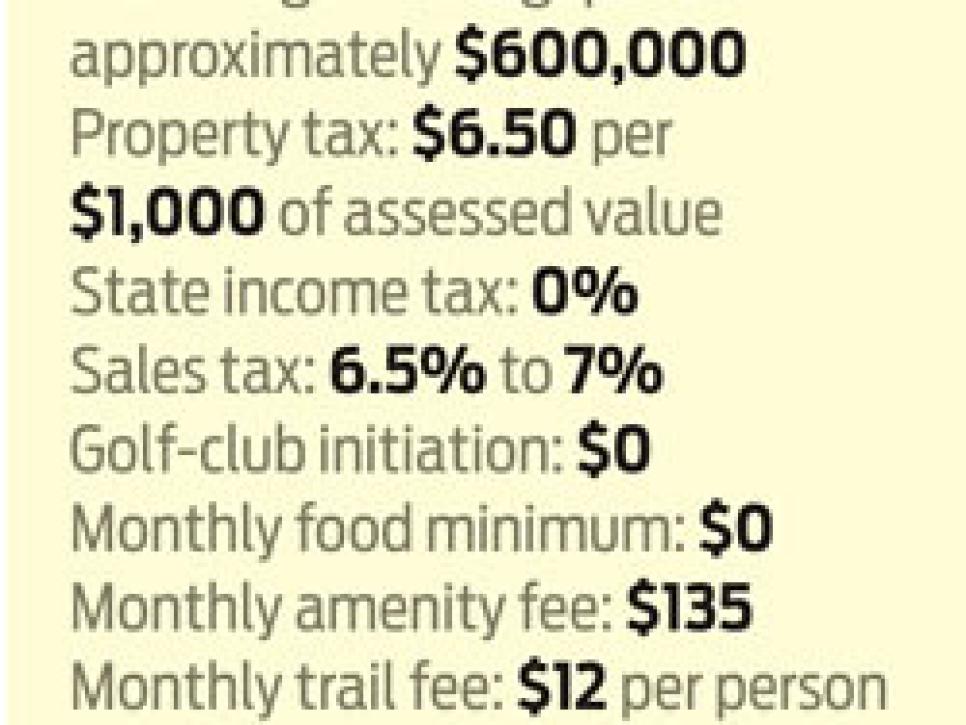
THE VILLAGES / FLA.
'We first saw an ad for this place on the Golf Channel, like most folks," says Don Hahnfeldt, 66. "I said, 'We've got to get down there and check that out.' " He and his wife, Cheryle, 65, visited the central Florida community one day seven years ago. That afternoon they bought a one-quarter-acre lot overlooking the Palmer Legends Country Club. Less than four months later, they had built a 4,000-square- foot single-family home on the site.
To say they love it there is an understatement. "I'm a retired Navy submarine captain, and we moved 30 times in my career," Hahnfeldt says. "Cheryle tells me there will not be a 31st move." Hahnfeldt describes himself as being "in pinch-me mode" about The Villages to this day.
For the Hahnfeldts, the numbers tell a compelling story. The 25,000-acre Villages community has nine country clubs (many of them with 27 holes) and 27 executive courses. Three more 27-hole country clubs and six more executive courses are planned by 2014. Though none of The Villages courses is likely to host a U.S. Open, there are some legitimate tests of golf. The Cherry Hill/Laurel Valley nines at the Palmer club, Don Hahnfeldt's favorite, stretch to 7,180 yards from the back tees, with a Course Rating of 75.1 and a Slope of 137.
The Villages' 80,000 residents can play any of the executive courses without paying a cent beyond their household's monthly $135 "amenity fee" and a monthly $12 "trail fee" for cart use. The Hahnfeldts pay an extra $80 per person each month for "priority memberships" that offer reduced green fees and seven-day advance tee-time booking on all nine country club courses. They play two or three times a week, with regular groups and "social" golf with other couples.
Don, elected president of the homeowners' association almost two years ago, notes that the amenity fee covers a lot more than golf. The community has bowling, tennis, "pickle ball" (a type of paddle tennis), 62 community pools and a massive softball league. The Villages' recreation department says it organizes more than 1,000 activities annually.
One of the things the Hahnfeldts like best about the community is the convenience. It's got dining, schools, even a Walmart Supercenter, all easily accessible by golf cart. The couple owns two carts -- and one "regular" car, mainly used for the hour drive to the Orlando airport to pick up visiting family members. (Children under 19 are welcome at The Villages -- they just can't stay for more than 30 days in any calendar year.) Says Don Hahnfeldt: "We have seven grandkids, and their No. 1 favorite thing when they come to see us is riding in those golf carts."
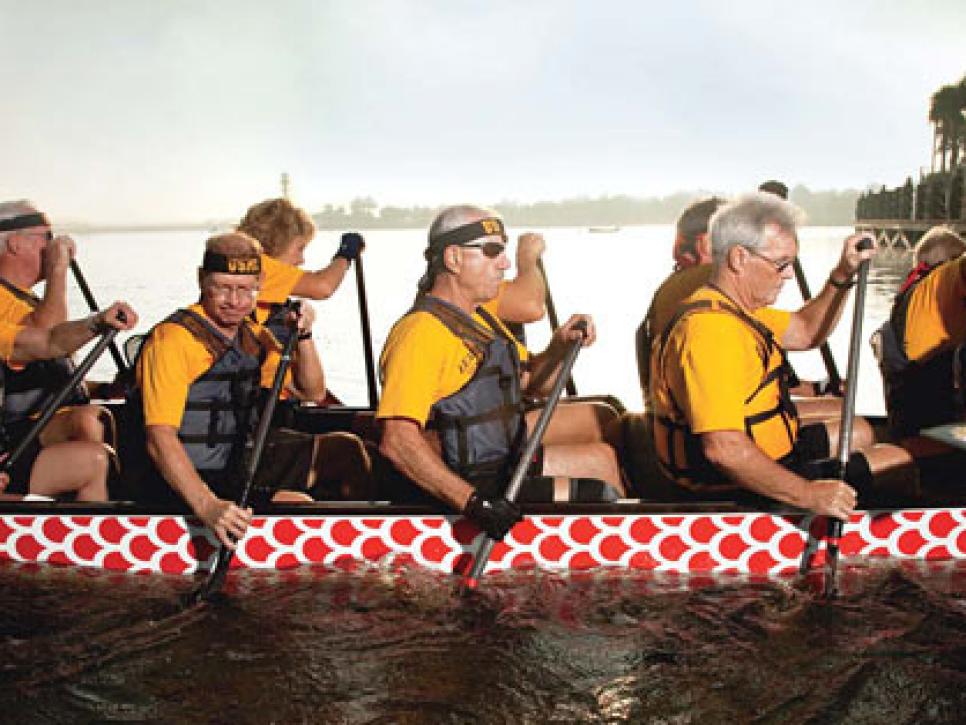
A monthly $135 "amenity fee" helps keep The Villages' facilities afloat.
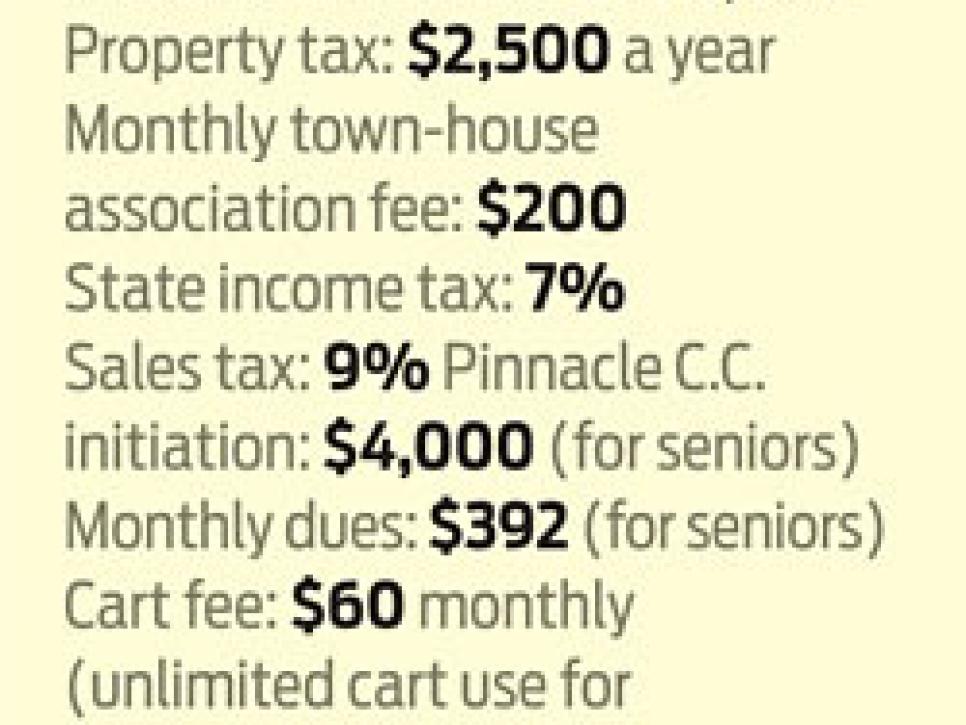
ROGERS / ARK.
'My wife says we've now lived in three foreign countries," says Bob Quinlan. "England, Mexico and Arkansas."
Quinlan and his wife, Dona, moved from Southern California to northwest Arkansas in 1992. At the time, he was general manager of a carbide manufacturing company.
"It was a major culture shock," says Quinlan, now 72. "The area was very, very rural then." Yet 10 years later, by the time Quinlan was ready to retire, he and Dona, 73, had become so comfortable in Arkansas they decided to stay.
The area is vastly different from when they moved there. The explosive growth of Walmart, whose headquarters are in nearby Bentonville, has been the primary driver. The population of Benton County has surged -- from 97,000 in 1990 to more than 200,000 -- and the amenities are far better.
"It's much more modern," Quinlan says. "We've got a mall. We've got good hotels and restaurants; we've got a Ruth's Chris now... "
There are also quite a few golf communities these days. Among the biggest is Bella Vista, with about 24,000 residents, six 18-hole golf courses and two nine-holers.
As you might expect from a couple whose honeymoon included four rounds at Pebble Beach, golf plays a major role in their lives. They're members of the Pinnacle Country Club, "an outstanding course," says Quinlan, that they play four or five times a week. The Arkansas golf season lasts essentially 12 months a year, though it gets a little chilly in the winter months, when there's an occasional dusting of snow.
The cost-of-living difference between Arkansas and, well, anywhere, is a big part of the appeal. The Quinlans' initiation fee at Pinnacle was $15,000 in 1992, less than half of what they got for selling their club membership in California. Pinnacle, now under new ownership, has dropped its initiation fee to $5,000 ($4,000 for seniors).
The Quinlans live in a 1,900-square-foot town house they bought for $250,000 four years ago. Before their 2006 "downsizing," they had a 3,300-square-foot home overlooking Pinnacle, which they sold for $550,000. Another factor keeping them happy in Arkansas: Two of the Quinlans' three grown children (and four grandkids) live in the area.
"We considered moving to Texas a while ago, maybe San Antonio," Quinlan says. "But no, I think this is it for us. We'll tough it out through the winters. Last year was pretty bad. We couldn't play golf for a couple of months." (Somewhere in snow country, a tiny violin plays.)
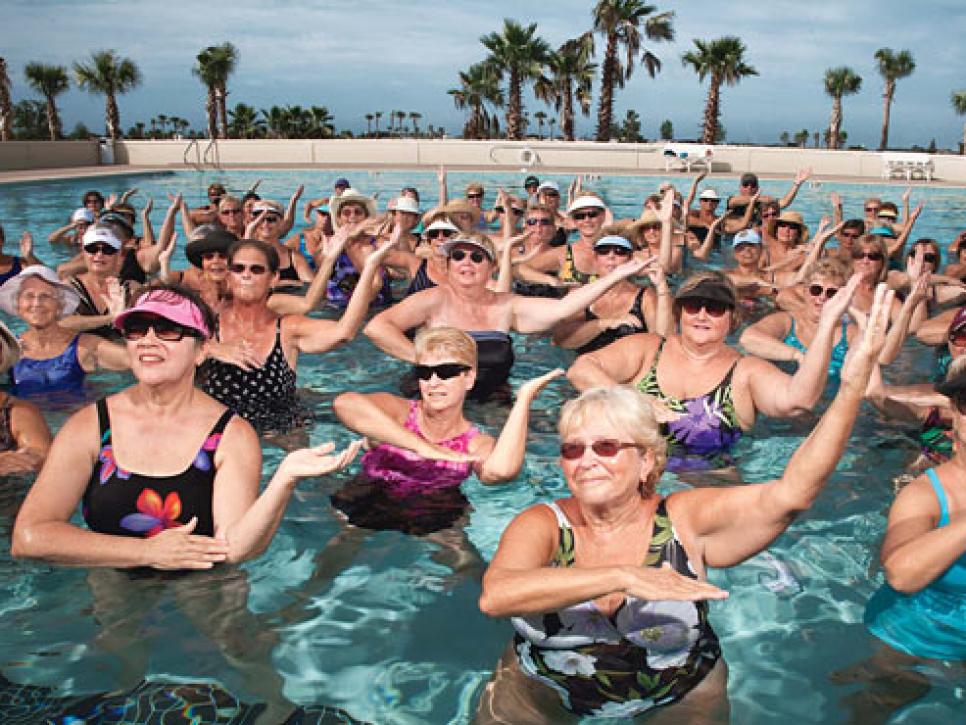
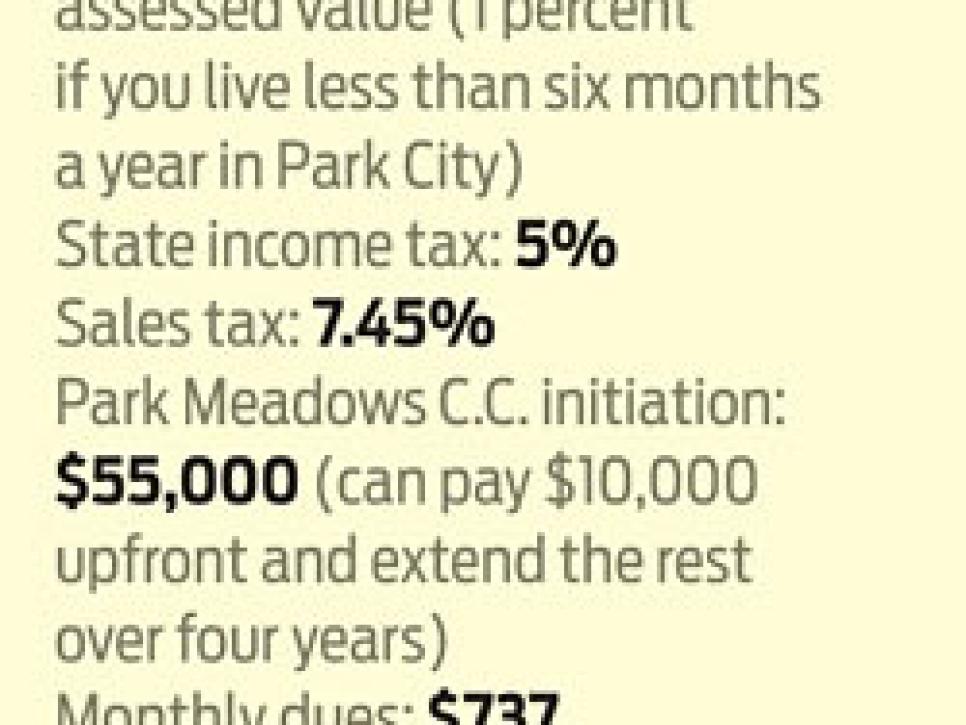
PARK CITY / UTAH
Golf was an important consideration when Jim and Marilyn Brezovec mulled their retirement options, but it wasn't the only consideration. The Brezovecs are avid skiers, too.
The St. Louis couple thought about Vail and Aspen, where they'd spent a few vacations over the years, but a pair of factors sold them on Park City, Utah: its greater economic diversity ("It's a real city -- not just all high-end," Marilyn says) and the ease of traveling through Salt Lake City's airport, 40 minutes away. ("Once we allowed five hours to get from Vail to Denver, and we still missed our flight because of a traffic jam," she says.)
In early 2007 the Brezovecs bought a 4,000-square-foot town house within walking distance of the Jack Nicklaus-designed Park Meadows Country Club, which they joined. They usually play four times a week during prime golf season, which runs from early June through early October.
Jim, 63, a former Monsanto executive, points out that they can easily stretch the golf season by driving just a few minutes down the mountain from Park City (elevation: 7,000 feet). Among his favorite spots is Wasatch Mountain State Park, half an hour away. Featuring 72 holes of golf, it usually stays open from early May through October, and on weekdays it charges seniors $37, including cart.
The day after they moved into their town house, the Brezovecs met what Marilyn, 64, calls "our 40 new best friends" from the Park Meadows ski group and were hitting the slopes at Deer Valley Resort, one of three ski areas within 15 minutes of their home. The couple skis at least four times a week during the winter. A season-long weekday ski pass at Deer Valley costs about $1,600 a year per person ($675 for those 65 and over). Marilyn, who worked in sales in the dental industry, figures they'll continue to combine skiing and golf for another 10 years. "Once we're not skiing any longer, we'll have to decide about living in an area with such a long winter," she says.
During the fall "shoulder season," when it's getting too cold for golf but it's still too early for skiing, the Brezovecs like to take a month-long trip overseas -- often with their golf clubs. So far they've visited Portugal, New Zealand and Ireland, for which they budget about $25,000 per trip. This year they're heading to Argentina. In the spring shoulder season, they stick to the United States, traveling to see family and friends and playing golf along the way.
One surprising aspect of their new life in Park City: They figured friends would come to see them only during ski season, but their guest room has been getting a real workout in the summer, too. Says Jim: "Once people hear about our 85 degrees with zero humidity, they want to come out and see for themselves."
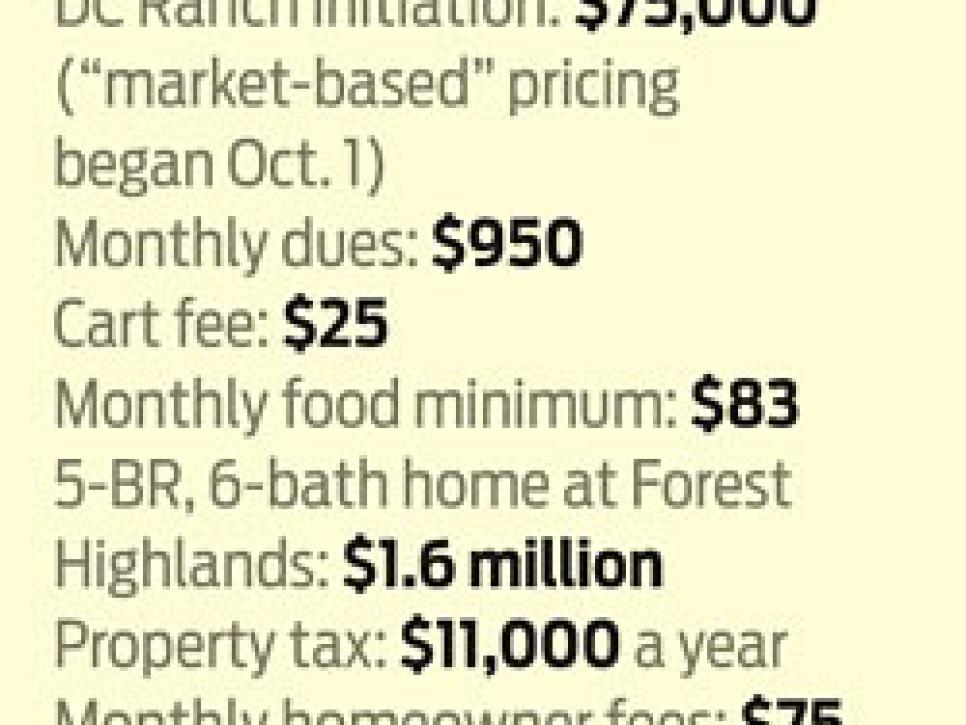
SCOTTSDALE
Ed and penny Rady were pretty sure they'd like to retire in Scottsdale, but still, it felt like a big leap. He was from the East Coast, she from the Midwest, and neither had lived in Arizona. So they eased into the market, buying a small $250,000 home in the Country Club at DC Ranch community in 1998 while Ed worked as an executive with a health-care communications company in New York.
Any concerns they had about adjusting to life in Scottsdale vanished as soon as they joined DC Ranch, which gets its name from the old Desert Camp ranch. "We've made friendships for life there," Ed says. "The camaraderie is unbelievable."
Certain that they'd found the retirement destination of their dreams, the Radys sold their Scottsdale starter home in 2000 and bought a 5,500-square-foot home overlooking the 11th hole at the Tom Lehman/John Fought-designed course. Total cost: $2.6 million. After Ed retired in 2007, they added a 5,700-square-foot summer home at Forest Highlands Golf Club, a two-hour drive away in Flagstaff. That one cost $1.6 million. Now the Radys spend May through October in mountainous Flagstaff -- where temperatures are in the mid-80s during the day and drop to the high 50s at night -- and the rest of the year in Scottsdale.
Penny, 51, carries an 11.4 Handicap Index; Ed, 61, is "about an 18." Penny gets out four times a week at DC Ranch and usually twice a week when they're at Forest Highlands, where there are a pair of courses. Ed generally plays two or three times a week.
Though golf is a key part of their social lives, traveling with their friends plays a big role, too. The Radys and several other couples from DC Ranch have journeyed to Africa, the Burgundy region of France, Hawaii and Mexico. The guys in their crew take an annual golf trip to Las Vegas, and the women just got back from Lake Tahoe. Not long ago, the Radys had five other couples from DC Ranch up to their place at Forest Highlands and organized a golf tournament for them. "There's really something special about that group at DC Ranch," Ed says. "It's unlike any place I've ever known. We got lucky."